#Photographic Melodie Studio
Text
Draken Asher Delivers Epic Delights to the Photographic Melodie Gallery
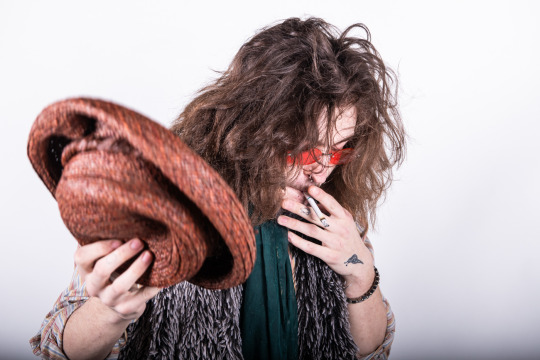
View On WordPress
#Draken Asher#interview#music photographer#Photographic Melodie Gallery#Photographic Melodie Gallery and Studio#Photographic Melodie Studio#promo session#promo shoot
0 notes
Text
“The Found Weekend”
This happened exactly 50 years ago: in late March- early April 1974, Yoko Ono lost total control over John Lennon, putting him in care Mei Pang.
Yes, John would later call this period of drug and alcohol delirium “A lost weekend”, but considering that the last one took place at that time - in fact, the only one after the Beatles! - jam session with participation Paul McCartney, Ringo Starr and John Lennon, and their last photos together were taken, then this is just a godsend for history and Beatlemans!
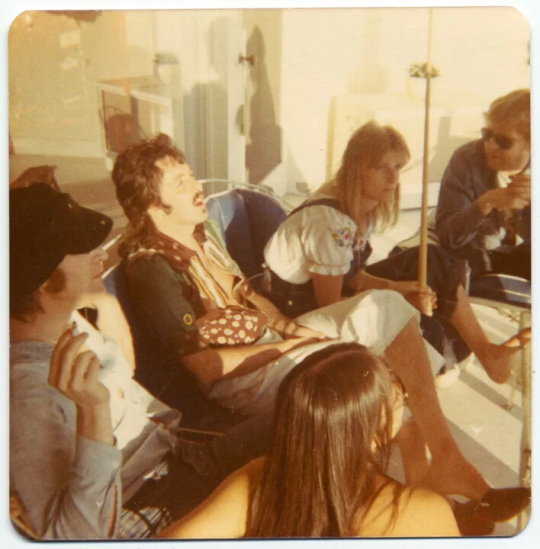
29.03.1974. Mae Pang, John Lennon, Paul and Linda McCartney, Harry Nilsson. Photo: MEL Evans (MALCOLM FREDERICK EVANS ARCHIVES)
On Thursday, March 28, 1974, Paul and Linda McCartney drops by Burbank Studios in California to see how the album is being recorded Harry Nilsson's Pussycats, produced by John, and Paul joins a jam session with John and other musicians on the track ‘Midnight Special‘, which is their first joint performance in the musical environment after the split of the Beatles, which happened about four years before. At the end of the day, John invites Paula at her music session at the beach house in Santa Monica.

01.04.1974. John and Paul by the pool. Photo: Dougal Butler. Perhaps the MOST RECENT photo of them together!
“Don't be too serious, we don't get paid. We don't do anything, we just sit here together, and if someone gets bored with me, take the lead!”
- John Lennon
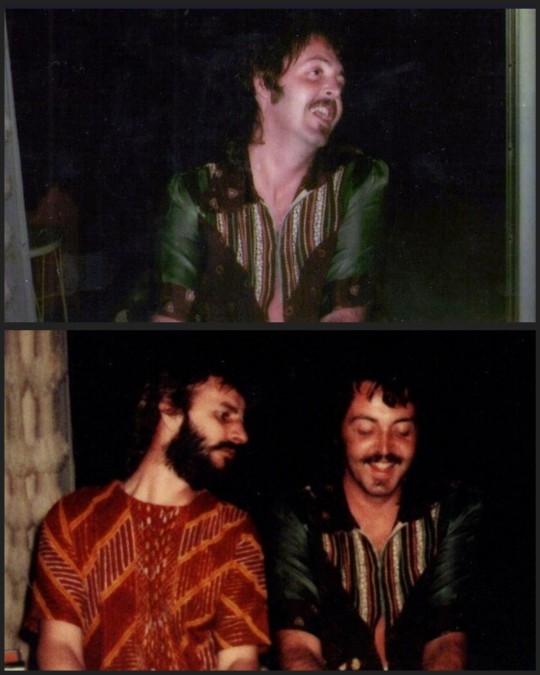

Ringo and Paul
These days, the last known photos of John and Paul together were taken. The photographers were John's mistress, Mae Pang, as well as the former roadie Beatles and at that time Lennon's bodyguard, Mel Evans. Several polaroids belong to Linda McCartney, as well as a friend and assistant Keith Moon to Dougal Butler. Dougal takes pictures on April 1, 1974, in which Paul performs a medley of Beatles songs on the piano, as well as those where John and Paul are together by the pool. (This polaroid photo will be the last ever joint photo of John and Paul...)
With no plans to record at Burbank Studios, John spends Sunday, March 31 relaxing by the pool, and later that evening holds the second of his Sunday music jam sessions at his beach house. Paul was among those present.

John. Linda's polaroid
“Just turn up the fucking microphone... McCartney plays harmony on drums,
” says John Lennon
during the evening-long session, which is recorded for posterity on equipment borrowed from Burbank Studios
youtube
Along with two former Beatles (John on guitar, Paul on drums behind the drum kit of Ringo, who was absent at the time - and both often on vocals), there are Linda (Hammond organ), Stevie Wonder (electric piano), Jesse Ed Davis and others. Cecilia is recording, and among them are melodies that they completely do not understand, you never believed, like: "Never trust a Bastard with Your Mother", "Little Beauty", "I Left Home And Wandered around", "Lucille", "Nightmares", "Be on your Guard I", "Cupid", "Chain Gang" and "Take This Hammer".

At the end of the session, in the early morning of April 1, Paul, Linda and their family go to the nearest hotel. And to the beach house Jonah is coming to Ringo... and he finds out that Paul had been here shortly before and played his drum kit.

Closer to lunch, they return to the beach house Paul and Linda, however John hadn't gotten up yet. Paul immediately heads to the piano and, along with Moon and Nilsson, performs a medley of Beatles songs, which all three musicians are happy to join. After that, Nilsson suggests Semi is a bit of a dangerous drug known as ‘angel dust‘, from which Paul refuses. John wakes up around 3 p.m. and joins other musicians and friends who are relaxing by the pool.
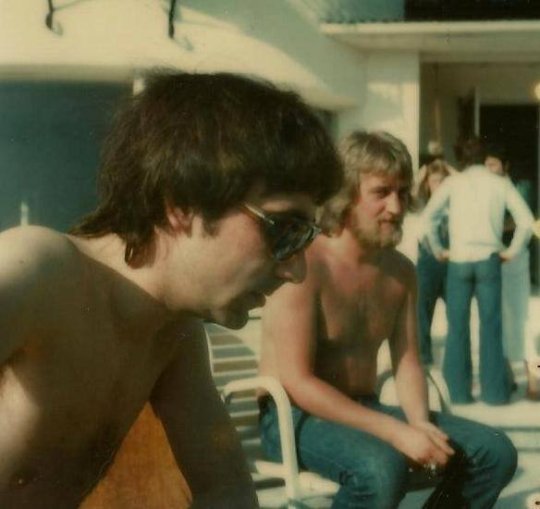
During his 1975 interview on BBC2 Old Grey Whistle Test John briefly recalled that session:
“I really played with Paul. We did a lot of things in Los Angeles. But there were fifty other people playing, and they were all just watching me and Paul!”

By the way, in April 1974, after many refusals following his drug conviction in England in 1973, Paul finally received an American visa. And on April 13, 1974, the album Band On The Run ascended to the top of the American album charts. It would go on to sell over 6,000,000 copies worldwide and spend over two years on the US and UK charts. Meanwhile, it is reported that on the same day, Paul's ex-girlfriend, an actress Jane Asher, gave birth to a baby girl in England.

#beatlemania#john lennon#paul mccartney#ringo starr#the beatles#music#music story#hustory#hustory music#my music#music love#musica#history music#musicians#spotify#my spotify#rock music#rock#rock photography#pop#“The Found Weekend”#Youtube#musical history in detail#Spotify
112 notes
·
View notes
Text

Today, on November 10th, 1978 - Queen Story!
"Jazz" album released in the UK
👉 The seventh studio album
➡️ 12/12/1978 - Circus Magazine
🔸In praise of ‘JAZZ’
The boys conjure up a bizarre junket by Mark Mehler
On Bourbon Street, in the heart of New Orleans’ fabled French Quarter, the sign reads, “Bob Harrington-Chaplain of Bourbon Street.” Upstairs, the freelance minister administers to the wicked minions below, while across the street, the Hotsy Totsy lounge features naked women parading across an oak bar from dawn to dusk, and next door, the “X-rated Shop” specializes in scatological posters and joy sticks.
This is Freddie Mercury’s favourite American city, where the Mississippi ends its majestic flow and zealots with big dreams fight a losing battle against hustlers, procurers, and all purveyors of sleaze. It is Freddie Mercury’s favourite city because the lead singer and bucktoothed front man of Queen is, above all, an actor. And in New Orleans, anyone can be anyone they want to be. Tonight, October 31, 1978-Halloween-Freddie Mercury and Queen have flown in 80 reporters from the U.S., Europe, Latin America and Japan, to see a show and be a part of a show at the same time. The third concert on Queen’s 28-city U.S. tour is in the ornate Civic Auditorium. Above the stage are listed the names of the mighty: Shakespeare, Michelangelo, Cellini, Durer, Gounod. Out of the soft blue and green lights and smoke, Freddie Mercury struts like a rooster, striking ballet poses, under an astral guitar blare that neatly skirts the sharp edges of rock & roll. The melodies are undistinguished, but the constant tempo changes of “Bohemian Rhapsody” and “We Will Rock You”, keep an audience awake for nearly two hours of uninterrupted music. The lighting show is one of rock’s most ambitious. Eerie purple lights shine out over the heads of the audience, making their hair seem cloudlike and inanimate. At the midpoint of the show, a smaller stage is lowered from the ceiling and 400 lamps meld into the sheer white plane of curtain light. Freddie is a whirling dervish, dominating every corner of the stage.
“Some people call this song ‘Spread Your Legs’, he tells the audience, introducing ‘Spread Your Wings’. “And I like it that way”.
Starting out in black sequins, he comes out for the first encore bedecked in orange hot pants, dancing around like Peter Pan. For the second encore he’s wearing a revealing, white body stocking. As he wails ‘We Are The Champions’, his voice warbles with mock emotion, and he grasps the microphone for support. At the apex of the triumphant denouement, the top executives of Elektra Records, who have sat smiling throughout the show, arise as one and walk out. Moments later, the show closes with a taping of ‘God Save The Queen’. Body and soul spent, Freddie ambles off stage, drained and spark-less. But Halloween night in New Orleans has just begun.
Back in the ballroom of the Fairmont Hotel, over 400 people have gathered to await Queen and much on a sumptuous table of hors d’oeuvres, such as Oysters Rockfeller and Shrimp Creole. A Dixieland band plays uninspired jazz jingles, until, shortly before midnight, the Olympia Brass band comes marching through the hall accompanied by Queen-the mercurial Mercury, the winsome Brian May, the puckish John Deacon, the velvety Roger Taylor. Suddenly, like a giant circus orchestrated by a deranged ringmaster, a legion of strippers, vulgar fat-bottomed dancers, snake charmers, drag queens, and bizarrely festooned revellers, begin to strut their stuff before the assembled masses. Freddie Mercury is besieged by hungry autograph seekers, groupies and fame-worshippers. People begin shielding their clothes, as an ever-imaginative photographer snaps Freddie signing the bare backside of a willowy transvestite. Freddie begins sucking on his giant overbite nervously, and by 2 a.m., he is mercifully gone. Brian May, who seems to be the true organizer of the night’s carnival, is cornered by persistent Japanese newshounds. “It’s wonderful,” he keeps saying. “It’s so nice to be back.” As the evening wears on, epicene men and butch women act out charades of power that would have embarrassed Hemingway. Three obese black women in g-strings do a pathetic bump and grind, and another female participant amuses a small gaggle of onlookers by putting a cigarette in an unlikely place. People leave to check out the scene on Bourbon Street and drift back to the party like cigar smoke. At 4 a.m., a Queen security guard, haggard and irritable, inquires when it will all be over. “Queen wants the naked disco dancers going to dawn,” informs his partner. And it does. The following day, Queen reappears at a press conference at Brennan’s, one of the French Quarter’s most elegant restaurants. Again, it is Roger Taylor and Brian May who dominate the conversation, as Freddie Mercury seems vaguely preoccupied. The subject of all this is ‘Jazz’, Queen’s new album, which contains no jazz. “People think we take ourselves a lot more seriously than we actually do,” says Roger Taylor. ‘Jazz’, Queen’s reunion with former producer Roy Thomas Baker, offers ‘Mustapha’, an up-tempo Hebrew rocker; ‘Fat Bottomed Girls’, a song that owes a lot to Pure Prairie League’s ‘Amie’; and more indulgent rhapsodies like ‘Jealousy’ and ‘Bicycle Race’, with its topical references to Star Wars, Jaws, and Superman. The ad campaign, like everything about the Band, goes to the limit of good taste: 11 bare-chested, major-league-yabboed women racing bicycles.
“It’s cheeky”, admits Freddie, “naughty, but not lewd. Certain stores, you know, won’t run our poster. I guess some people don’t like to look at nude ladies.”
Freddie, 32, was born in Zanzibar and educated in India, and was a childhood table tennis and hockey prodigy. He studied art and became a graphic designer and illustrator, having given up piano lessons in the fourth grade. But he continued singing, fronting his first band at 14 and forming Queen with Roger and Brian in 1970. After the routine easy grilling, Mercury is cornered outside. “You seem to be removed from the character up on stage. Is that really you?”
“No,” says Freddie, “of course it’s an act.”
He denies pandering to gays; or for that matter, to anyone. He hints at a quiet, restless man who needs to step outside of himself for ego-stimulation.
“I have fun wearing all those costumes,” he says. “I can really cut loose up there”.
Freddie is then swiftly ushered out, and again, Brian May is left behind to field the endless questions of the Japanese. The two-day junket, painstakingly directed by and for Queen, ends with a few straggling journalists eating Bananas Foster and being more cynical than usual. Outside, on Bourbon Street, a folk singer entertains an empty house of red velour seats, affirming that a falling tree makes a sound whether it’s heard or not. Which conjures up something Brian May had said about Queen constantly seeking “direct communication with our audience.” For all the words that describe Queen’s trip to New Orleans, direct is surely not one.
#freddie mercury#queen band#london#zanzibar#legend#queen#brian may#john deacon#freddiebulsara#roger taylor#1978 interview#1978#jazz tour#jazz album#circus magazine
29 notes
·
View notes
Text
Sweet Creature
Harry said that Sweet Creature is about one person, and that he will never say who, adding if he would never tell them it wasn't about them. I think the protagonist has changed since it was written. It was a closer in the Live on tour set, and often emotional like this time in New York.
It was played once on HSLoveOT at Wembley. Harry talked about Gemma first bringing him to London for xfactor and he’d “like to play a song for her tonight”. He thanked London. So its matured in meaning and he sung it to Gemma, who had a baby 8 months later:
youtube
19 February 2016
At the Troubadour (at 21:40) on it's launch 19 May 2017, Harry said Sweet Creature was written a few weeks after his birthday 1 February 2016. It was written at the Village in Los Angeles. There is a photo of him at the studio on the 19th February. He also said it was the first song he wrote “for” the album (1:22). Harry said that one song (two ghosts) was written before leaving the band but everything on debut except 3 songs were written between July and December 2016.
Sweet creatures opening melody is similar to Blackbird by the Beatles. Blackbird is a McCartney song, interestingly, Harry was photographed with Ringo at the Clive Davis Grammy party. From I'm Not Happy (possibly the same night) and Pop Tart it might have been the first time they saw each other after the 2015 BBMAs 8 months earlier, 1D had been touring for most of that.

Cry “O sweet creature!” then kiss me hard
‘Sweet Creature’ appears in Shakespeare’s Othello. A tragedy, Othello is newly married to the beautiful (and faithful) Desdemona. The villain, Lago resents Othello and drives him mad by insinuating that the handsome and charismatic Cassio had an affair with Desdemona. Lago tells Othello that he heard Cassio talk in his sleep:
In sleep I heard him say “Sweet Desdemona Let us be wary, let us hide our loves.” And then, sir, would he gripe and wring my hand, Cry “O sweet creature!” then kiss me hard…”
It’s a really interesting reference. On one hand, Harry is singing with genuine affection and fits the imagined role of Cassio. However, as described in Woman Harry was jealous and he’s also the villain, messing with CH, in a laughably effective way.
If the Othello reference holds, Desdemona had also not cheated on Othello. But by 28 February Harry tweeted 'You can shake an apple off an apple tree.' And by April 29 that may have changed (Illicit Affairs / I did something bad).
Lyrics
[Verse 1]
Sweet creature
Had another talk about where it's going wrong
But we're still young
We don't know where we're going
But we know where we belong
In out of the Woods and interviews about it Taylor talked about the relationship being tentative and plagued by challenges and poor communication.
Harry did not know where he was going, One Direction was broken up and although he started recording he had not signed a solo record deal.
TS and HS were unable to let each other go for years, often singing about belonging, or eventually being together. Particularly Someday, Satellite, As it Was, The 1 and End Game.
[Pre-Chorus]
And, oh, we started
Two hearts in one home
It's hard when we argue
We're both stubborn, I know
But oh
'Two hearts one home' references Hopelessly by Crosby, Stills and Nash hoping on Harry’s Another Man Mix Tape. “They are One Person / They are Two Alone”, Nash was longing for Joni Mitchell, an idol of Taylor’s. This line is often read as referring to Gemma and when played it again in 2023 Harry agreed. However I think it wouldn’t have been dropped from the set if it was about Gemma.
In 2016 though, his 'home' was not a building. In the first 2 minutes of the Fine Line interview with Zane Lowe Harry talks about not feeling at home and feeling lost in his house in London on a 5 day 1D break, and glad when it ended. Taylor was a home of the heart, a part of his world and separate to the band. Woman Exile has more on ‘home’.
The idea of one’s sweetheart being home is in the Notebook, Harry’s favourite movie. Old Noah says it to his kids when they ask him to come home with him, his wife is his home.
[Chorus]
Sweet creature, sweet creature
Wherever I go, you bring me home
Sweet creature, sweet creature
When I run out of road, you bring me home
‘When I run out of road’ reminds us of the amount of Driving in Haylor songs. But this is referring specifically to Harry’s anxiety going solo and trust/hope that Taylor would be there for him. 7 months later in New Years Day she agreed: “I'll be there if you're the toast of the town, babe, Or if you strike out and you're crawling home”
[Verse 2]
Sweet creature
Running through the garden
Oh, where nothing bothered us
But we're still young
I always think about you and how we don't speak enough
I think here though the Garden is the beach at Taylors Rhode Island home, (bought when they first dated) where the 1989 and 1989 TV covers and rolling stone beach shoot was. This shoot is referenced in the videos for Style and End Game.
Similar lyrical references are in Cruel Summer (snuck in through the garden gate to seal our fate), Blank Space (Rose Garden filled with thorns) and Betty (In the Garden would you trust me).
Not speaking is also a common theme, best put in Fine Line: "Spreading you open Is the only way of knowing you", and The 1: "And if you wanted me, you really should've showed."
And he posted this when it was released
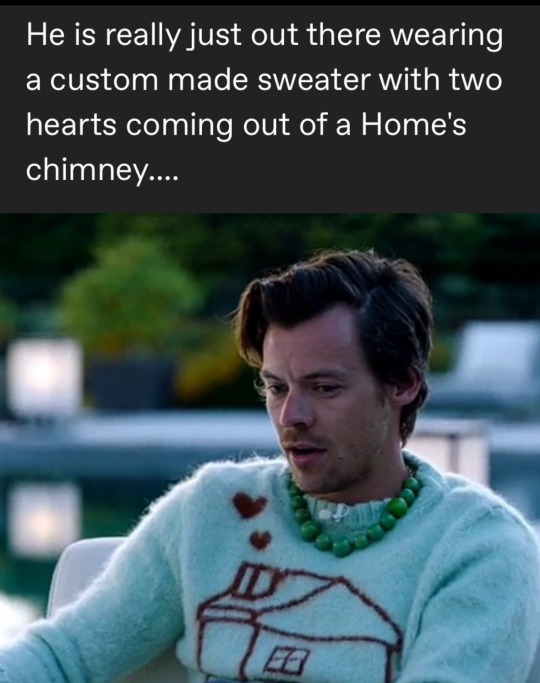
28 notes
·
View notes
Text
Very Full - Chapter 10: Lay Me Down
Summary: Melara gains some perspective as her powers grow.
Word Count: 2,860 words.
Chapter Warnings: Kinda fluffy, kinda angsty.
Soundtrack Link
This Chapter's Music Inspiration:
Lay Me Down by Sam Smith featuring John Legend
Very Full MASTERLIST
Previous Chapter
A/N: As per usual, I just want to say that I do not own the rights to the lyrics. I did, however, imagine that Melara wrote this song, because the lyrics fit so perfectly into hers and Loki's story.
Let me know if you would like to be added to the taglist!
Months had passed since Melara’s poignant encounter with Loki in the dim light of the studio. The world outside her window had subtly shifted; the once-distant dream of a music career was now blossoming into a vivid reality. Gone was the time when she felt like just a karaoke bar and a shower singer. Now, the songs she had poured her heart into, born from the depths of her experiences and encounters with a certain god of stories, were now resonating with a wider audience than she had ever imagined.
The first hint of change came quietly, almost unnoticeably, with local independent radio stations playing tracks from her demo. Then, like a ripple expanding across a still pond, her music began to reach further shores. One song, in particular, a haunting melody that spoke of love and loss in equal measure, caught the attention of a national radio network. Its lyrics, imbued with the pain and beauty of her time with Loki, seemed to strike a chord with listeners, drawing them into her world.
Each day, Melara found herself navigating this new reality with wonder and apprehension. Her once-routine visits to the local coffee shop turned into impromptu meet-and-greets with fans who recognized her voice from the radio. Invitations to play at larger venues and interviews with music journalists became a regular part of her schedule. Her world, once confined to the four walls of her apartment and the small stages of local bars, was expanding in ways she had not dared to hope for.
Yet, amidst the whirlwind of her budding career, Melara could not shake off a sense of solitude. The growing life inside her was a constant reminder of her connection to Loki; one that was both a source of strength and a wellspring of longing. Each night, as she lay in bed, the faint stirrings of her unborn brought thoughts of him – thoughts that were a bittersweet reminiscence and aching absence all at once.
The apartment, once her sanctuary, now felt too large, too quiet. Even with frequent visits from her friends or her mother. The walls, adorned with framed lyrics and photographs from her performances, echoed with memories. She would look at each fondly, often studying the photographs in the hopes that she would catch a glimpse of Loki in the audience watching her. The lyrics though were like a vocal manifestation of their complicated relationship – so close, yet an entire universe apart.
As Melara navigated the unfolding chapters of this new life, one aspect that continually left her in quiet amazement was the warm embrace she received from the public, not just as a musician but as a soon-to-be mother. It was a blend of identities she had worried might clash but instead harmonized beautifully in the public eye.
Fans and critics alike seemed to celebrate her pregnancy, viewing it as a symbol of authentic life experience, enriching her music with layers of depth and emotion. The way her growing belly was received as part of her artistic image, rather than a hindrance to it, felt like a refreshing departure from the norms she had anticipated. Each performance, interview, and public appearance where her pregnancy was not just accepted but celebrated, bolstered her confidence. It was as if her personal journey of love, creativity, and impending motherhood resonated with an audience far broader than she ever imagined.
But as her due date drew nearer, the reality of her situation became more pressing. The nights were longer now, filled with a restless energy that kept her awake, her mind racing with plans and worries for the future.
During the day, she would often find herself staring out the window, lost in thought. The cityscape, with its bustling streets and towering buildings, seemed both familiar and alien. It was as if she were viewing the world from the other side of a veil – a part of it, yet separate, caught between the life she had known and the one that was unfolding before her.
In these quiet moments of reflection, Melara found herself thinking about Loki’s projection. At first, it had been a source of frustration, a painful reminder of what could not be. But as time passed, she felt a shift. The projection, with its silent presence and watchful eyes, had become a comforting ethereal presence that was her link to Loki. Even though he had promised to keep his distance, Melara continued to experience passing moments where she could sense his presence, but could not physically see him around.
As the autumn leaves began to fall, painting the city in hues of orange and red, Melara felt a change within herself. There was a growing sense of acceptance, a realization that while her life was taking an unexpected path, it was one she was ready to embrace. The music, the pregnancy, the connection with Loki – they were all threads in the tapestry of her life, each one essential to the pattern that was emerging.
And so, as the season turned and the chill of winter began to creep into the air, Melara prepared herself mentally for the next chapter of her story. This particular evening’s air was cool, carrying the scent of the approaching night as Melara stepped into her apartment, her feet and back aching from the long day. The rehearsal, a duet she had been practicing for weeks, had drained her more than usual. Her body, adapting to the growing life within her, demanded rest, a plea she could no longer ignore.
Melara moved through her home with a familiar ease, shedding the layers of the day. The apartment, once a quaint vessel for her modest aspirations, had transformed along with her life. Where there had once been space for her to dance and sing without restraint, there were now stacks of fan mail and gifts from admirers, as well as a crib in the corner gifted to her by her mother. Her coffee table, once cluttered with lyric sheets and old guitar picks, now held glossy magazines with her face on the cover. It was all so surreal, like living within a dream she had conjured in some distant, hopeful night.
Melara stood by the window, her hands wrapped around a steaming mug of tea, watching as the streets below filled with passersby on their way to dates, dinners, and errands. She sipped slowly, the warmth of the liquid doing little to ward off the chill that seemed to have settled in her bones. The lights dimmed, casting soft shadows against the walls, as her phone dinged with a message from the studio technician she had worked with for the day. Checking the screen, she noted the words from the technician as they flashed across her screen:
Today’s session was magical! I’ve attached a file of what we got.
In her sanctuary of solitude, Melara’s fingers danced across her phone, connecting it to the Bluetooth speaker. The living room, a witness to her solitary evenings and silent tearful reveries, now hummed to life with the first tender strokes of a piano. She cradled her belly as the melody rose like a gentle tide, flooding the space with its calming presence. And then she heard her voice. It sounded hushed, yet passionate as it told of every sentiment held within her heart.
Yes, I do, I believe,
That one day we will be where I was,
Right there, right next to you.
And it’s hard, the days just seem so dark.
The moon, and the stars are nothing without you.
Your touch, your skin, where do I begin?
No words can explain the way I’m missing you.
Deny this emptiness,
This hole that I’m inside.
These tears, they tell their own story.
Told me not to cry when you were gone,
But the feeling’s overwhelming, it’s much too strong.
Can I lay by your side?
Next to you?
You.
And make sure you’re alright.
I’ll take care of you.
You.
I don’t want to be here if I can’t be with you tonight.
As the notes swirled around her, her eyelids grew heavy. A strange sensation, like a gentle tide pulling her under, overtook her. This was no ordinary fatigue; it felt as though the very essence of her being was being drawn into a realm beyond the confines of her apartment, beyond the constraints of time and space. While she lay there, it was not the voice of her song partner she heard, she pictured Loki on his throne projecting the next verse in her mind.
I’m reaching out to you,
Can you hear my call?
This hurt I have been through,
I’m missing you.
I’m missing you like crazy.
In the depths of her slumber, Melara found herself standing at the edge of infinity in a music-fueled haze. A vast, star-studded expanse stretched out before her, a cosmic ocean sparkling with the light of a billion distant suns. And there, amidst the celestial beauty, was Loki’s throne, a construct of unimaginable majesty and solitude.
The throne, a masterpiece as if wrought from the cosmic dust of bygone nebulas, perched regally upon a dais that commanded a view of the celestial infinity. There, enthroned in majesty, was Loki, the aura of his godhood undimmed by the eons. His eyes, those deep wells of enigma, once more held the starlit dance of the universe’s deepest secrets. Yet, in the gaze of Melara’s approach, the sharpness that so often underpinned his gaze melted into a tender warmth, a silently shocked recognition of her presence in this place beyond the march of time.
Melara stepped forward, her heart pounding in her chest. The air around them was alive with the whispers of the ages, voices of the past and future mingling in a symphony of eternity.
“Loki,” she whispered, her voice echoing in the void.
“Melara,” he replied, rising from his throne. His form, both imposing and graceful, moved towards her with a fluidity that defied imagination. “H-…how are you here?”
She reached out, her hand trembling as it met his. The contact was electric, a current of connection that transcended the timelines themselves. “I-…I don’t understand. Is this real?”
His hand cupped her face, moving to rest gently on her belly, and in that moment, a warmth spread through her, a sensation so real and profound that it bridged the gap between their present circumstances. Loki at the end of time and Melara resting on her timeline, yet somehow impossibly projecting herself outside reality as she knew it. She could feel his presence, his concern, his love. It was as if the very essence of her being was reaching out to him across the expanse of time and space.
“What is real anyway?” Loki said with a grin.
Melara looked down at Loki’s hand connected with her rounded abdomen wide-eyed with a gasp. “Loki,” she began, her voice laced with wonder and awe. “I can feel you. Like, I can really feel your touch. This isn’t a dream, is it?”
“No, ‘Lara,” he replied, his voice a blend of warmth and sadness. “You seem to have blurred the boundaries of the possible. We are both as real as the heart beating in your chest. The warmth of your skin.”
Tears welled in her eyes as the emotional weight of his words sank in. “How?! It’s so…real.” she rasped, emotion stealing her voice.
Loki brushed the hair from her face. “I just don’t know,” he said, shaking his head as if to wrack his brain for some explanation as to how a human being might have conjured this level of a projection without training. “It seems you had to experience it for yourself to understand.”
“I’ve missed you,” she smiled softly, her voice just as tender. “I’ve missed…us. I feel like I have been wrong…all wrong…about everything. I’m so sorry.”
They shared a warm embrace, both terrified to utter a word, lest it change the reality that existed before their eyes. As they stood there, at the very edge of eternity, Melara felt a peace she hadn’t known in months. The worries of her waking life, the uncertainty of her pregnancy, the loneliness of her success – it all faded into the background as she basked in the glow of their connection.
But as all dreams must, this one too began to fade. The stars flickered and dimmed as Melara felt as though she were falling. The grandeur of Loki and his throne at the end of time blurred into the soft darkness of sleep. As she faded out of Loki’s view she managed to reach out and speak the words, “Come find me.”
Melara awoke with a start, her body heavy and her mind foggy. The room was quiet and dark, the song having long since finished playing. She felt a dull ache in her bones, a physical reminder of the profound experience she had just lived through. The implications of the experience hit her all at once. As the realization came through to her conscious mind, Melara noticed a familiar face standing over her, smiling fondly. It was Loki.
***
“So fucking help me, Loki, do not…,” Saoirse warned.
Loki laughed. “I will spare you the details.”
***
The days that followed were a haze of exhaustion and recovery. Melara was pale, her movements slow and deliberate. Sleep came easily, but it was a deep, consuming slumber that left her feeling though as she were recovering from a great exertion. She spent those days wrapped in the arms of Loki’s avatar, fully understanding the strength it took for Loki to be present for her.
But as the cycle of seasons continued to turn and the birth drew near, a discernible change had woven itself into Melara’s very being. The vivacity that once danced in her eyes, the same spark that had captured Loki’s attention amidst the chaos of realms, had dimmed to a mere flicker. Her once robust strength, which had carried her voice to the heights of auditoriums and the intimacy of dimly lit bars, seemed to have been siphoned away, leaving her countenance hauntingly gray and her movements listless.
In the quiet moments, when the world slipped into slumber and left Melara alone with her thoughts, she could feel the vigor that had pulsed through her veins like a relentless river now trickling away to a sluggish stream. She looked upon her reflection, tracing the contours of her face, searching for the woman she recognized – the woman who had stood defiant and radiant before a god and mortals alike.
But the reflection that stared back at her was a shadow, a shell of the once fiery spirit that had drawn stories from the lips of Loki himself. This weary body housed a tiredness that seemed to reach into the marrow of her bones, a fatigue that whispered of more than just the physical toll of carrying a new life. Aware of the looming demands of new parenthood, Melara urged Loki to rest while she slept, echoing the precautions he was taking at the time she first learned his presence was only a projection.
As Saoirse Freyja Runa Lokisdottir made her entrance into the world, a new life forged from the old, it was not just the sleepless nights or the demands of motherhood that weighed heavily upon Melara. It was as if the very core that bound her to the earth and to the stars was slipping through her fingers. The connection to Loki, once a vibrant thread of gold in now felt like a gossamer strand, fragile and prone to breaking.
It was not lost on Melara that the timing of her decline had coincided with the burgeoning of her music career and the life that had grown within her. The songs that echoed on the airwaves, the verses that spoke of love eternal and hearts entwined, seemed to draw from her an unseen price – as if each note had carried away a piece of her soul.
There was a bittersweet irony that in giving life to her daughter and her music, she felt life ebbing from her. And in the depths of her heart, where fear and bravery waged a silent war, Melara wondered if the magic that had once seemed to bless her was, in truth, a curse in disguise, a star burning too brightly, destined to fade.
Even Loki, with his eyes that saw beyond horizons, watched helplessly, his projection a watchman to the unfolding tragedy. The woman who had burned so brilliantly, who had held the chaos of his nature in her steady gaze, was retreating inward, her light withdrawing into some secret, guarded place he could not follow.
It was a cruel twist of fate that as Saoirse’s life began with all the promise of dawn’s first light, Melara’s seemed to be approaching an untimely dusk. And all who watched from near and far, held their breath, waiting to see if the morrow would bring rebirth or the quiet close of a chapter that had only just begun. Little did anyone know that the future was to get brighter in ways that no one expected.
---
Tags: @mischief2sarawr
#loki masterlist#loki fanfiction#loki fanfic#loki imagine#loki laufeyson fanfic#loki laufeyson#loki odinson#loki marvel#loki#loki series#loki x reader#tva loki
7 notes
·
View notes
Note
Do you know if the 150 vault tracks for 1989 was true? I’ve always assumed it to be false/exaggerated but it’s something I’ve seen being talked about on TikTok constantly so i’m doubting myself
as far as i've seen, that particular number comes from a secret sessioner. there probably some truth to it-- there's this aside from her New York Magazine article (which she gave on September 22, 2013) "While on the Red tour, she’d been writing songs and stockpiling ideas: reams of lyrics, thousands of voice memos in her iPhone," and she also mentioned in a video (i think in the grammy listening session when she's talking about ryan tedder?) that she tried to bring 3-5 ideas to a producer before they got in the studio so they could choose what they wanted to work on. which is like, an insane amount of backlogged song ideas when it comes to taylor, so it makes sense.
that being said, i don't think they were full songs (at least the vast majority of them). based on the voice memos and the interviews i've read, it seems like taylor would have a verse/verse melody and a chorus, and then once a producer chose a song she would flesh it out more. there are some exceptions, but by in large, most of the voice memos she brought to producers were varying degrees of unfinished. furthermore, the stuff that didn't get chosen by a producer was likely not recorded in any real way, and therefore not legitimately considered for the album.
here is a list of all the vault songs we know about
she was in the studio in early october 2012
jacknifee lee implied her and harry wrote a couple songs together that fall
she's tweets about being in the studio in february 2013
she's photographed entering one in early march
she posts on instagram implying she's writing a song in late march
in november of 2013 she says a couple times that she has seven or eight songs that she knows she wants on the album. by that, taylor had likely recorded 10 songs that went on to make 1989, 7 that had been made since taylor and jack had a big conversation about 80s music in may, and 5 of which that were likely recorded in the past two months. so, depending on how taylor was judging "songs she knew she wanted on the album", that leaves room for about two or three songs from late 2013 that almost made the album but didn't.
she writes one with diane warren in january 2014
she's photographed entering a recording studio in march 2014.
by may 2014, she had likely wrapped recording and done the album photoshoot. so being generous, that's roughly a dozen mostly complete, unreleased songs. there's always the possibility of more, but i would still say that would bring the total up to 15, tops. furthermore, only 5 of those songs that we know about were written after taylor and jack had had their conversation about 80s music (x, x, there's so much more pick like any piece of press jack does about 1989) and taylor starts building the album around it (x, x).
so like, despite having a lot of rough drafts, taylor likely had a fairly small amount of songs she legitimately considered for 1989 but cut. which is what the vault songs are-- not a complete record of every song she halfway made while writing for the album, but a collection of killed darlings.
15 notes
·
View notes
Text
‘Robert Smith isn’t people’s perceptions’: Stories behind classic photos of The Cure
As the Cure head out on tour across the UK, renowned photographer Tom Sheehan takes us on a trip through some classic pictures of the band.
LAURA KELLY
Tom Sheehan has been taking photos of The Cure since the ’80s. Snatching moments on tour in dressing rooms around the world. Persuading the band to pose in major European cities. Capturing that intense connection Robert Smith has with the camera, and acting as a conduit to the readers of Melody Maker, NME, Sounds and Record Mirror.
Sheehan’s new book The Cure: Pictures of You is a visual record of one of the UK’s most influential bands. As The Cure head out on tour across the UK, Sheehan looks back on his decades of working with the band to share his memories and the behind-the-scenes stories of some of his favourite shots.
The first time I met Robert [Smith] and Lol [Tolhurst, the Cure’s former drummer] was at the Shepherds Bush Hilton in 1982. The Cure were supporting the Banshees, and Robert was also playing in the Banshees so he was a tired boy, I guess.
We were under the cosh because they were about to head off to soundcheck. So, my journalist colleague got about 20 minutes on tape. I got a few frames of them going through a revolving door going out of the hotel. When I look at those pictures, I see there’s a lot of humour going on.
On that half roll of film, the majority of them they’re larking about and Robert was smiling. It was a very comfortable entry into the world of The Cure. There’s that kind of rolling humour that The Cure have, which, luckily for me, I seem to have tapped into from our very first encounter. The perception of Robert at that time wasn’t a very happy guy. He isn’t what people’s perceptions of him are.
Prior to a band recording or doing a gig or whatever, there’s always a little bit of camaraderie. You’re setting things up and there might be a little bit of joshing going on, but the minute you start rolling, you’re working. I’m performing as much as they are. They’ve got to respond to me.
Robert does have a reputation for being a control freak, but I think he hands over the baton to whoever is working with. He ain’t going to leap through hoops of fire, and it was never in my modus operandi to get pictures that made the turn look foolish. But I think he trusts people that he knows can do the job.
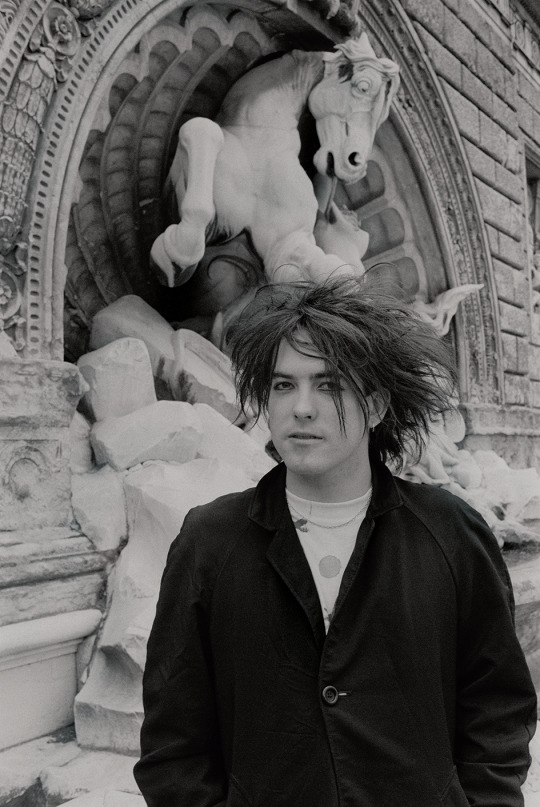
The Cure on tour: Robert Smith in Bologna. Photo: Tom Sheehan
Robert Smith enjoys the sculptures in Bologna: The Cure on tour in Italy, June 1984
This was on The Top tour. I joined them in Italy. They were quite a tight band. There’s always this thing when you join a band on tour, even if they know you a bit, you still feel like the outsider because you’re not part of the gang. Although you might be an honorary member for two or three days, you’re an outsider. It’s like you can’t argue with a married couple. It’s the same with any band, you know: they’ve got their own lingo, their own ways. You’re witnessing it, but you’re actually outside of it. And you’ll never be able to penetrate it.
That statue with a fountain is in Bologna, and it’s on a Sunday morning. The day before, the gig was great… but earlier on in the day, Robert had a dicky tummy. I think he’d eaten a dodgy prawn or something and he was laying on the on the dressing room floor, groaning in pain prior to soundcheck.
He recovered enough the next morning to go out. But it was a case of, let’s nail it. So that was just a quick once around the block and take some pictures. It was really fortuitous that there was some nice architecture around to utilise.

Lol Tolhurst and Robert Smith. Photo: Tom Sheehan
A cheeky moment with Robert Smith and Lol Tolhurst: The Cure on tour in Italy, June 1984
I have a history of them doing stuff [for other photographers] and me walking in and taking over the studio. There was this really famous Italian photographer who was shooting them for a really high-end publication. This guy was set up and then he was done, and he was talking to his assistant. I just shifted the lights around a bit, and whacked off a couple of frames. That was on the hoof, you know? If something presents itself, you just go to go, there you go chaps. And bang, bang, bang. This picture is the one Lol used on the cover of the UK version of his biography, Cured: The Tale of Two Imaginary Boys.
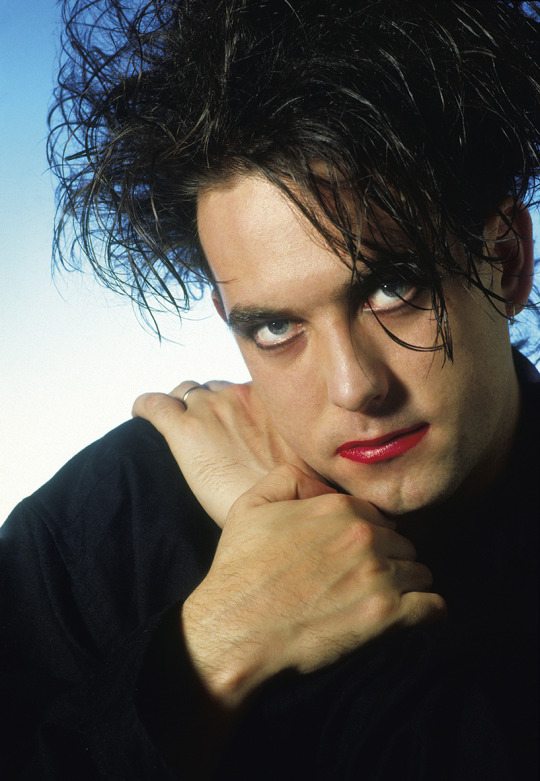
A dressing room portrait. Photo: Tom Sheehan
Getting Robert out of bed: The Cure on tour in Brussels, November 1987
It was a Saturday night, they played some club in Brussels which I can’t recall. We’re in the dressing room and Robert’s sorting out his hair and all that stuff. I’ve just got a couple of plastic backgrounds on a wall and I’m just saying, “Robert, the blue one.” I’m getting them as they’re ready.
If they’re getting ready for a show, they don’t really want me in their in their hair as well. So I pinned up two backgrounds next to each other so I could switch, one to the other. Then the Melody Maker’s got a choice of colours.
Those pictures have quite clear lighting, they’re quite defined. Good for a cover, perhaps. But I was gagging for something in daylight. So, I said to Robert, can we meet tomorrow lunchtime? I get there at one or two o’clock, and the bugger’s still in bed. It was in November, and it was getting dark. So, I thought I better go from street level up to the roof. And then Robert turns up and it’s that classic kind of ‘Tommy, do I really have to be here?’ kinda look. This kind of weathered, aged, ‘is this totally necessary?’ look. I always remember it, because it doesn’t look as dark as it was getting… or maybe it was just my sheer panic.

Eye contact is vital to make a photo work on the newsstand. Photo: Tom Sheehan
‘Give us your eyes’: The Cure on tour in France, 1989
This was a swifty – dive in and dive out. You can’t take a photograph of The Cure in their fatigues. You can’t do it until he’s ready, in the sense of made up, ready to go. The eyes are on, the lips on, the hair’s done. If they if they’ve got a gig coming, I have to be quite economical with the time because they’re on stage in 30 minutes.
Robert is really good at connecting with the camera. He knows what’s required. It’s not like the [Melody] Maker was some sort of art magazine. You couldn’t have some enigmatic, looking-at-the-stars shot, because it’d be too dark and the ink would fuck up. A lot of time it had to be quite clean.
When Melody Maker, along with the NME and Sounds and Record Mirror, was sitting with a multitude of other magazines on the news stand at Tottenham Court Road when you come out of the tube station, you’ve got to be able to see those minces [mince pies, rhyming slang for eyes] on the other side of the road. Every time I’m working with a man, whoever I’m photographing, I say, give us your eyes. Unless you got eye contact, you can’t expect people to look at it the same way.
Sometimes when you look into the lens and look into their eyes, it is a bit of a staring competition. With Robert I think he’s always been confident. I mean, God knows what he thinks about in his own time, but when he’s working his confidence is great. He’s always appeared to be older than his years as well.
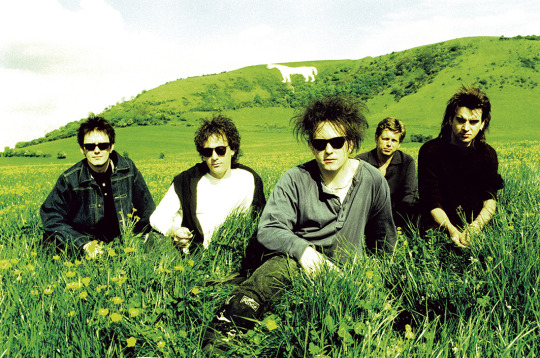
A big day out to Westbury White Horse with the Cure. Photo: Tom Sheehan
Robert’s side hustle as a National Trust guide: The Cure in southwest England, 1995
This was a great day out. The band were done in the southwest recording [the album Wild Mood Swings] in that actress’s house [Jane Seymour’s house, St Catherine’s Court in Somerset]. I came down when they’d been stuck in the studio for a couple of weeks, so I’m sure they wanted a distraction. In other words, taking the piss out of a mature lensman. So, off we went.
Robert was, and probably still is, a member of the National Trust. So he had it all worked out, where we’re were going. We got in a van and we just travelled around. We went to Cheddar Gorge and all round that area. Robert had made a few notes, so he’d be looking at the map, and saying, “Coming up is…”
The horse doesn’t have any hidden meaning. It’s just the British countryside. But I like to think it confused a lot of people overseas, in Japan or whatever.

The Cure at Westside Studios. Photo: Tom Sheehan
Music icons: The Cure in Westside Studios, London, 2005
It was 2005, and The Cure were in Westside Studios recording. I was taking a picture of Robert with a copy of Bowie’s …Ziggy Stardust… for series of portraits on music icons and the records that inspired them. I said to him, “let’s get a couple of other portraits while we’re here”. There was this spiral staircase outside, so we headed there. Robert said to me “you’ll do better getting me from above…” and he was right. I like taking photos from above, you get a better line on people’s jaw. Their faces look better.
I think Robert worked out his relationship between him and the camera. I mean, he got his whole thing together, didn’t he? With the hair and the lips and the clobber. If you’ve got all that stuff around, you could confuse the viewer. So I’d always say, I still want the eyes. I want that contact.
The Cure: Pictures of You by Tom Sheehan, with a foreword by Robert Smith, is published November 3, 2022.
#article#tom sheehan#the cure#robert smith#simon gallup#perry bamonte#roger o'donnell#jason cooper#lol tolhurst#book#merch#music#alternative rock#gothic rock#new wave#post punk#80s music#90s music#2000s music#1984#1987#1989#1995#2005
88 notes
·
View notes
Text

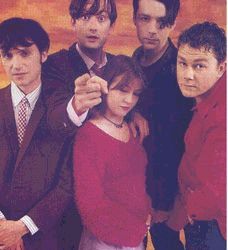
Pulp Diction - Part One
Words: Paul Lester, Photographer: Pat Pope
Melody Maker, 27 May 1995
Transcription: Acrylic Afternoons
Starring:
JARVIS COCKER as THE JUNKSHOP ROMANTIC
STEVE MACKEY as THE PLAYBOY
RUSSELL SENIOR as THE ALIEN
CANDIDA DOYLE as THE CARE BEAR KID
NICK BANKS as THE PIE-MUNCHER
From the late Seventies right up to the early Nineties, Sheffield's Pulp were critical faves whose bizarre sex-obsessed space-pop eluded commercial success. Then in 1994, their His 'n' Hers LP sold 100,000 copies, went Top 10 and almost won the Mercury Prize. Meanwhile, frontman Jarvis Cocker became Britain's unlikeliest sex symbol and all-round multi-media pundit. With their fantastic new single 'Common People' released this week, we meet the brilliant Pulp as they prepare to ascend to the next level of fame and acclaim.
PULPINTRO
He's Chris Evans' favourite artist. Greater London Radio has called him "the first pop star of the 21st century". This writer reckons he's Eric Morecambe meets James Bond. And he's described himself as "Woody Alien in platform heels". Ladies and Gentlemen, Jarvis Branson Cocker, the human stick insect in Oxfam gladrags rechristened "Pop's Mr Sex" by The Observer's "Life" magazine, has just entered the building. And tripped over some camera cable.
As stumbles go, it's pretty clumsy. Although Jarvis doesn't exactly tumble arse over tit onto the Maker photographer's studio floor, it's a trip nonetheless, a full-scale fumble of the feet, a semi-somersault. Not that Cocker seems to care. He doesn't bother to check whether the nosy bastard journalist has witnessed his miniature fall from grace, he just regains his balance and heads towards the studio table where several platefuls of sweets and sandwiches await.
The trip is all. In it, we can locate the sublime/corblimey essence of Pulp, the most modern of modern pop bands, fronted by Jarvis Cocker, the ordinary man with the extraordinary talent, the sex god with the sex problems, the klutz-icon whose Cool Quotient is raised precisely because he doesn't mind looking uncool. Thought: Jarvis Cocker has the same initials as Jesus Christ and Jimmy Corkhill.
Fact: on the night of this interview, he is spied in a quiet corner of a Menswear after-show party with a gorgeous young girl, legs akimbo, facing him on his lap, her skirt around her waist, his crotch against hers, the pair, oblivious to the drinking/drugging hordes (basically the entire population of The Good Mixer relocated to London W1), thrusting and grunting like extras from "Confessions Of A Britpop Idol".
Theory: the British public is obsessed with sex, especially public sex, at which Jarvis Cocker is (becoming) an expert. Ergo, the British public is (becoming) obsessed with Jarvis Cocker, who, after 15 years in the shadows, is Going Public with Pulp's synthetically treated, dramatically arranged, indecently graphic pop songs about public - and private and magical and mundane - sex.
PULPSEX (FOREPLAY)
A Pulp feature without sex would be like a Barry White feature without sex or a Spiritualized feature without drugs or a Snoop Doggy Dogg feature without guns or a Shaun Ryder feature without sex and drugs and guns, or a Paul Weller feature without loads of tedious meandering bollocks about old blues and soul records. But a Pulp feature - or, for that matter, a Pulp song - doesn't have to be solely about sex. It's just that, for Pulp, as it is for Jarvis Cocker, as it is (let's be honest) for us, sex is the axis around which all their/his/our other obsessions orbit.
So, yes, a Pulp feature or a Pulp song could be about knitting, just as it could be about fairgrounds or babies or joyriders or pink gloves or lipgloss or underwear. But really, once you've rubbed at the surface and scrubbed away the details of Pulp's beautiful tales of banal lives, you're left with sex, in all its gory glory. I'm not sorry about this. Neither's Jarvis Cocker.
"Is there anything in the world more interesting than sex?" the thinking woman's crumpet with the thick-rimmed spectacles repeats my loaded/"Loaded" question in his inimitably rich, deep South Yorkshire voice. "No, I don't suppose there is. Eating and reproducing are the two major motives that make animals want to do things. And I don't think it's that different with people, except that people have the ability to think about it, and have morals about it. I always thought of sex as something quite transcendental," he continues, leaning forward now. "Not that l'm into tantric sex, or whatever, but in the way that it transcends... In a world where religion isn't such a massive guiding force, sex is, along with drugs, the closest we ever get to a transcendental feeling. Especially the moment of orgasm." Oo-er, Jarvis Cock-er.
Think of the seedy voyeurism of "Babies" (from "His 'n' Hers") where the kid watches his friend's sister going at it hammer-and-tongs through a gap in a wardrobe door; of the tawdry perversions of "Sheffield: Sex City" from "Pulpintro" ("I just had to make love to all the cracks in the pavement and the shop doorways"); or the smutty ambiguity of "Little Girl (With Blue Eyes)" from "Masters Of The Universe" ("There's a hole in your heart / And one between your legs / You've never had to wonder which one he's going to fill"): Pulpsex is never the hygienic coupling you see in films, the seamless, juiceless, sexless, unproblematic sex we're all supposed to have as adults.
Jarvis Cocker is the only white pop artist currently addressing the subject of sex in an explicit manner. Historically, white pop sex has either been good clean fun (The Beatles, The Beach Boys) or its darker side has just been hinted at (The Who, The Rolling Stones) or it has been the course of much angst (New Order, The Smiths).
Today, of course, sex is dealt with in numerous black genres such as rap, house and swingbeat, only there the sex is the mechanically precise variety, all domineering men and submissive women, gleaming musculature and cool biological fusion and fission. Pulpsex is rather more fumbling and fallible than that. It takes place between streets, not between the sheets.
"I like that sort of thing," admits Jarvis. "It's good for sex to be an event, not always taking place in the same venue. It's better to go on tour, as it were. It's more exciting. Not that I'm one of those people who has to think that they're going to be discovered at any moment shagging in an alleyway, or whatever."
"Anyway," he refers back to the bump 'n' grind style of contemporary sensual poetry, "that's where most pop writing about sex falls down. It becomes like a parody of a man trying to portray himself as God's gift to women, as the greatest stud alive."
Could a white man ever get away with a line like Barry White's "Take off your brassiere, my dear"?
"No, they'd get the piss taken out of them, and rightly so."
As Pulp's popularity increases, so too does Jarvis Cocker's ability to reduce female admirers to paroxysms of pleasure at the sight of his beanpole academic frame or the sound of his lugubrious, deadpan, baritone. Thing is, they're half surrendering to Jarvis, the post-modern Englebert Humperdink (he sends them), and half laughing at themselves for doing so (is he sending himself up?). There is a similarly narrow line in Pulp's songs between the silly and the serious. Could Jarv sing a song about sex with a straight face, or does he usually feel the need to be self-deprecating about it?
"Well," he smiles, "there is always that temptation where sex is concerned to hide the IQ, to pretend you didn't really mean what you said, which is a cop-out. You have to risk looking a bit daft."
Jarvis didn't lose his virginity until he was 19, and he was apparently celibate for several years when he moved down to London from Sheffield at the age of 25 to study film at St Martin's College Of Art. For years, his frustrated lust for lust fuelled his muse. Now he's got a live-in lover, Sarah, who may or may not be the saucy girl from the Menswear party and works in a mental health centre. ("I DJ'ed there once," Jarvis tells me. "I played them lots of Madness records".) Although like all of us he's struggling to keep his coitus explosively interesting while in a steady relationship ("I don't think you can have both at once. Do you know what I mean?" Oh, but I do), he is surely having at least more regular, if not more successful, sex. Is there a direct correlation between Jarvis Having Successful Sex and Jarvis No Longer Being Able To Write Successfully About Sex?
"It depends how you measure success at sex," he says. "There isn't a score card in operation, or anything." I dunno, I got a standing ovation from my girlfriend the other night. "I wouldn't say I was having more successful sex now," Jarvis ignores me. "I might be having more sex but I don't know if it's more successful." But if it was? "Then I'd probably stop writing altogether and concentrate on shagging! If it was that good. I mean," expands Jarvis, grandly, "there is a theory that states that people create Art because they're sublimating their sexual desires in some way, or they have certain feelings of dissatisfaction which drive them to achieve certain things. So if you were really satisfied with sex and life in general, you'd probably just give up creating and concentrate on enjoying yourself."
There are few signs of a satisfied Jarvis Cocker on "Common People", Pulp's anthemic, gigantic new single whose relentlessly intense rhythm and motorik pace recall the demonic, supersonic, electronic mo-mo-momentum of Eno-era Roxy Music, and whose juggernaut keyboard riff and vitriolic sex-geek lyric smack of Elvis Costello at his most deliciously malicious (circa "Lipstick Vogue"). The narrator of this staggering piece of synthesised pop invective relates the story of a girl who wants to slum it for a while by moving into a scuzzy neighbourhood, shopping in scummy grocers and sleeping with common people like...
...Jarvis?
"Sex was never really on the cards, to be honest," says the working-class boy from Intake, Sheffield of the real life incident recalled in "Common People", in which a student from a wealthy Greek family who Jarvis met at St Martin's College outlined her plans to take a brief, vicarious holiday in other people's misery, via El Jarvo himself.
"That was just a bit of poetic license. I only knew her for a matter of weeks, and I only spoke to her a few times, but it stuck in my mind what she was saying, that she wanted to sleep with 'common people like me'."
Did she actually use that line?
"Oh no. She never actually said that to me. It was one of the things that I found quite strange when I moved to London," digresses Jarvis, reminiscing about his formative years as a fully paid-up member of the Weird Teen Club, about his days wearing lederhosen and looking like a bit-part from "The Sound Of Music".
"Because when I lived in Sheffield I was always getting flack off football fans, stuff like, 'F***ing poof'. I was always considered a bit effete. Then suddenly I came down here and, because I spoke with this northern accent, I had this air of slight earthliness. I liked that, because I'd never had it before."
"So yeah," Jarvis returns to the inverted snob-protagonist of "Common People", "maybe she did consider me a bit common." Isn't that Pulp in a nutshell: a blend of the earthly and the effete, the coarse and the camp?
"Maybe, I don't know. That's your job to say that." So you were a bit posh up in Sheffield, and you're a bit rough in London? "Yeah, maybe. Yeah."
Does Jarvis, the alienated wunderkind who has been in Pulp for over half his life, feel more comfortable back home or down here?
"I was thinking about that when we played with Oasis at the Sheffield Arena show, actually," he says, fiddling with a loose fingernail. "At the do afterwards there were loads of people from Manchester and I really enjoyed being there, because I've not socialised in the north for a long time. I've found I get on easier with northerners that I do with people that I meet down here."
Can we extrapolate from this that, perusing a list of his peers, Jarvis would be more at ease with, for example, Oasis that he would, say, Blur?
"I've got more in common with Oasis, yeah. When it comes to something like civilised conversation."
Civilised conversation? Oasis?
"Why not? In fact, the first time I ever spoke to them was when we were all in America and we were trying to get into their show in San Francisco. And we got a message saying, 'You can all come in as long as Jarvis comes onto the bus and talks to us.' So I went on and talked. They were really friendly. Unfortunately, I was in a really depressed state - it was my birthday and I was feeling a bit maudlin - and they probably thought I was a right moron."
Jarvis Cocker meets the brothers Gallagher. The mind truly boggles at this summit encounter between such diametrically opposed aesthetic schools of consciousness. I suppose Noel and Liam were busy swapping lurid tales of birds and booze while poor Jarv was left to ruminate on the shabby nature of existence, or something.
Am I right?
"Not really, no," Jarv casually leaps out of his seat to deposit a bit of nail in the studio bin. "The only real difference," he says, plonking himself back down on his swivel chair, "was that they were talking about shagging birds and I was thinking about shagging birds."
Part Two: Here
#russell senior#jarvis cocker#steve mackey#candida doyle#nick banks#pulp#britpop#melody maker#interview
19 notes
·
View notes
Text
Beyond the Lights, Pt 3
Dating Lena isn't easy. If that's even what they're doing. Part of Kara feels like she's simply tagging along for the whirlwind life of Lena Luthor, flitting from interview to recording studio to modelling shoots. But just when Kara is about to call enough and leave, she catches Lena's eye, and the smile that answers that split moment of eye contact makes the stolen hours, minutes, moments between them worth it.
In those stolen moments, Lena finally begins to open up. About her life, her feelings. The fact she wants to write her own songs. The fact she never wanted to sing pop in the first place-- how her true love are the haunting melodies of her homeland, and that one day she wants to bring the lilting style to an eponymous album.
In exchange, Kara shares that while she does actively love her job, she's already wearing thin. The job is tough, and she sees too much for her faith in humanity to remain intact. She doesn't ever want to lose sight of the good in people, but she doesn't know what else she could ever do that could help people in the same way she does now.
It's tender, and somehow more intimate than any sex Kara's ever had. She feels like Lena can see inside her, and as they continue whatever it is they're doing, she slowly discovers that she can read Lena.
She can see how much the pressure of Lena's career weighs on her. She sees the way Lena's eyes flick to her mother when a photographer asks to see more and more skin, and how Lena's jaw tightens when Lillian always gives the greenlight, either ignorant or indifferent to her daughter's discomfort.
Kara sees how uncomfortable Lena is in a room full of people all clamoring for her attention-- or just clamoring for her, attention be damned. At times it seems like Lena is nothing but a doll to them, to be moved this way and that, and that is when Lena is the most frighteningly empty.
Their intimacy comes to a screeching halt, however, when Kara finds out that Lena is in a relationship with fellow recording artist and frequent collaborator Jack Spheer. Lena assures her that it's just for the label, that Jack is gay too, it means nothing... but Kara can't shake the hurt of having to find out from a tabloid first-- and that it means Lena isn't being as honest as she thought.
"So if the press thinks you and Spheer are dating," Kara says carefully, "what exactly do they think we're doing?"
"Does is matter?" Lena asks, sliding her hand over Kara's.
Kara pulls away. "Yes. It matters. I spent too much of my life hiding who I was and who I wanted. I'm not going to do that again."
"What do you expect me to do, Kara? The label is holding my album over my head-- if I don't give them the version of me they want, they'll scrap the whole thing!"
"Why does it even matter? It's not your music! You said you don't even like--"
"I have not worked as hard as I have, sacrificed as much as I have, to see it all go up in smoke."
Kara regards her solemnly. "Then I guess that's it."
"Wait, what?"
"I should go..."
Lena reaches for her, but Kara pulls away, already reaching for her keys and jacket. "Kara, wait, please--"
"Good bye, Lena."
She pretends not to hear the sob in Lena's chest as she pushes out the door and heads home.
#supercorp#beyond the lights au#angst#there's gonna be a lot of that in this au#the movie was especially angsty#but it had a good ending#just fyi here is where the ficlet will kind of diverge from the movie#the themes will be similar#but the events will be a little different#bc i didn't wanna make jack an asshole
38 notes
·
View notes
Text

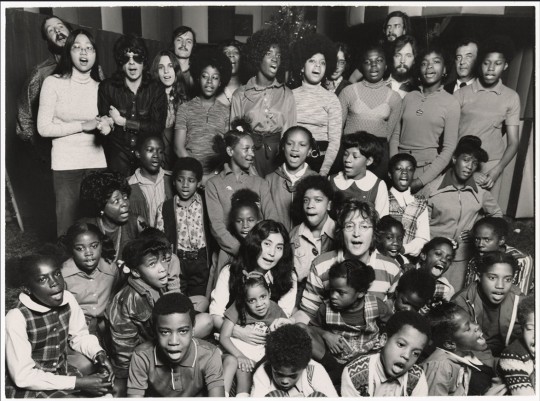
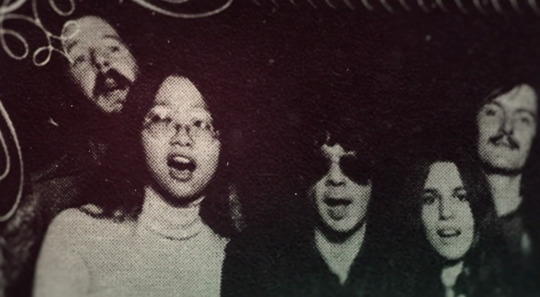
1971 - May Pang can be seen on the backround of the cover photo of John Lennon's and Yoko Ono's "Happy Christmas" (War is Over), recorded between October 28 and 31, 1971.
The Harlem Community Choir – 30 children, most of them four to twelve years of age – came to the studio on the afternoon of 31 October to record backing vocals for the counter-melody and sing-along chorus. Photographs for the original sleeve cover were also taken during that session by Iain Macmillan.
Third photo, our screencap from May's documentary "The Lost Weekend: A Love Story".
#May Pang#1971 May#May backing vocalist#Happy Xmas#War is Over#1971#Happy Xmas (War is Over)#Iain Macmillan#John Lennon#Yoko Ono#Plastic Ono band#harlem community choir#1970s#1970s May#backing vocalist#producer#muse#model#author#photographer#jewelry designer
4 notes
·
View notes
Text
The Wandering Tulipps Saunter into Southport for Fun Interview and Beautiful Performance

View On WordPress
#interview#Photographic Melodie Gallery#Photographic Melodie Gallery and Studio#Photographic Melodie Studio#promo session#promo shoot
0 notes
Photo

Looney Tunes Original Production Cel: Daffy Duck and Bugs Bunny
MEDIUM: Original Production Cel on Printed Background
IMAGE SIZE: 12 Field
PRODUCTION: Looney Tunes, Box Office Bunny
SKU: IFA8867
ABOUT THE IMAGE: Looney Tunes is a series of animated short films by Warner Bros. It was produced from 1930 to 1969 during the Golden Age of American Animation, alongside its sister series, Merrie Melodies. This piece comes with a certificate of authenticity.
ABOUT THE MEDIUM: Original production cels are one-of-a-kind pieces of art that were used in the creation of an animated film or television show. Each has been hand-painted by studio artists on a piece of celluloid acetate, and has been photographed over a background painting to create a frame of the finished production.
#Looney Tunes#Box Office Bunny#Original production cels#Original production cel#Original production Art#Production Cel#Production Art#Bugs Bunny#Daffy Duck
28 notes
·
View notes
Text
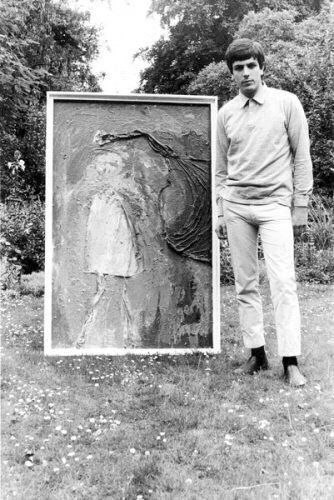
Syd Barrett with a hand-painted painting, 1964

"THE BEE KING" AND SID'S LETTER
In December 1964, 18-year-old Barrett wrote an illustrated letter to his girlfriend Jenny Spires, telling about the first sound session of the future Floyd's. The demo recordings were made in a small London studio with an eye to signing a contract with a major record label. At that moment, the band was influenced by the "rolling stones" and Bo Diddley, this can be heard both in their own stuff and in the cover version of I'm a King Bee, which Sid mentions in the letter.

Six tracks recorded between December 1964 and January 1965 were included in the mini-album 1965: Their First Recordings, officially released in 2015. And later they were included in the box set The Early Years 1965-1972. Floydomans are well aware of this. Since that time (especially in connection with the release of the mini-album), there have been a lot of posts with playlists on social networks.
Offers a translation of the letter, which is published in Barrett's book. The definitive visual companion to the life of Syd Barrett (2011), which also includes Barrett's artwork, photographs, and other letters. It was first unveiled at the Cambridge Gallery in an exhibition dedicated to it in 2008.

Perhaps Sid is naive in this letter, and there is nothing of the great poet's rhetoric in the text, as, indeed, in his other epistolary archives. But in such modest sketches there is a breath of time and the magic of the authentic background of a single human everyday life, unadorned by historians and biographers. In addition, the epistolary syllable of Sid retains a share of stylistic melodiousness, and this also makes the written sample interesting. After all, Barrett's characteristic feature as a composer is that he "paints" a song with intonation, sounds, and syllables, as already mentioned in posts dedicated to Lucifer Sam and Arnold Layne.

It can also be mentioned that Sid illustrated himself, Mason, Waters and Bob Close, who was the lead guitarist of the band at that time. Sid signed his letters and paintings with his real name "Roger".

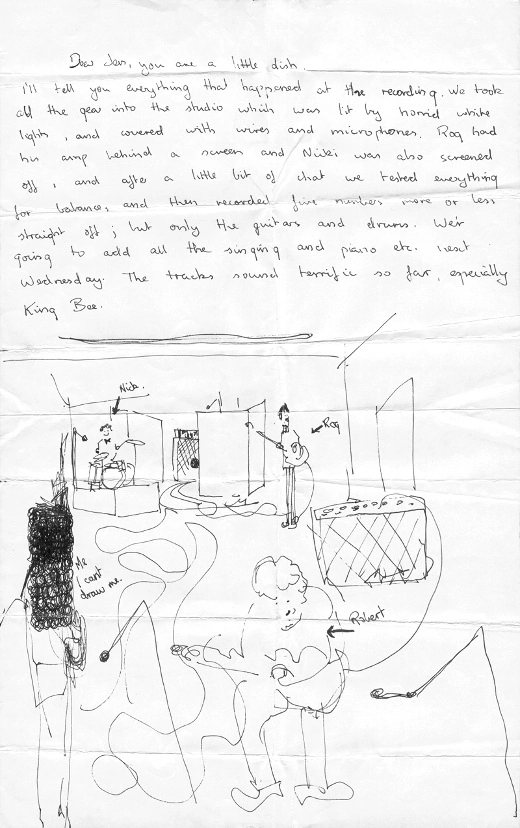
"Dear Jen, you are just lovely.
I'll tell you what happened during the recording. We dragged all the equipment into the studio, which was illuminated by a terrible white light and entangled with wires and microphones. Roger's amplifier was positioned behind a sound-absorbing screen, and Nicky was also "shielded". After a short conversation, we checked everything on the balance and wrote down five numbers more or less at once. However, only guitars and drums. We're going to add vocals, piano, etc. next Wednesday. The tracks sound awesome so far, especially King Bee.
When I sing, I have to stand in the middle of the studio with headphones on, and everyone else is watching from another room. I can't see them at all, but they can all see me. Also, I can only hear what I sing myself.
I hope you got home well, Jen, and had a good time. You couldn't have come to the recording. And anyway, it all lasted until midnight and it would have been a terrible burden for you.
How pleasant all these tra-la-la are (don't worry about distracting).
Do whatever you want, Jen. I love you very much and I want to hear from you, and you are very beautiful.
I'm a little tired of everything today, and I want to be in Cambridge or Greece, but not in London, where all I do is spend money and go back and forth. But the sun is still shining.
With love. Roger."
youtube
In case someone missed the Floyd's mini-album with those demo songs mentioned in the post, you can listen to it, for example (there is a song layout in the description, and to watch it, you need to go directly to the channel):

#syd barrett#Pink Floyd#musicians#music story#history music#david gilmour#nick mason#roger waters#richard wright#progressive rock#live shows#art rock#space rock#experimental rock#music#my music#music love#musica#spotify#rock music#my spotify#rock#rock photography#Youtube
22 notes
·
View notes
Text

Today, on November 8th, 1974 - Queen Story!
'Sheer Heart Attack' album released in the UK
- Reached number 2; chart for 42 weeks, achieved Platinum status.
🔸“The album is very varied, we took it to extreme I suppose, but we are very interested in studio techniques and wanted to use what was available. We learnt a lot about technique while we were making the first two albums. Of course there has been some criticism, and the constructive criticism has been very good for us. But to be frank I’m not that keen on the British music press, and they’ve been pretty unfair to us. I feel that up and coming journalists, by the large, put themselves above the artists. They’ve certainly been under a misconception about us. We’ve been called a supermarket hype. But if you see us up on a stage, that’s what we’re all about. We are basically a rock band. All the lights and paraphernalia are only there to enhance what we do. I think we’re good writers – and we want to play good music, no matter how much of a slagging we get. The music is the most important factor. This is our first headline tour, and the buzz has got around, without any support from the media. I suppose they like to find their own bands, and we’ve been too quick for them. You see, when we started out, we wanted to try for the best. The best management, the best record deal, we didn’t want any compromise, and we didn’t want to get ripped-off. So far, it has paid off. In America, we’ve broken the ice already. As you know, we started a tour there last year, supporting Mott The Hoople, but Brian was taken ill and we had to come back. But we had a top thirty album hit there. We’ve undertaken a huge project, but it’s all good fun”
- Freddie Mercury
Extract from interview 11/09/1974 - Melody Maker
Pic: Queen in 1974 photo session for 'Sheer Heart Attack' album
📸 Photographer © Mick Rock (1948-2021)
#freddie mercury#queen band#london#zanzibar#legend#queen#brian may#john deacon#freddiebulsara#roger taylor#1974#sheerheartattackalbum#mickrock#photosession
24 notes
·
View notes
Text
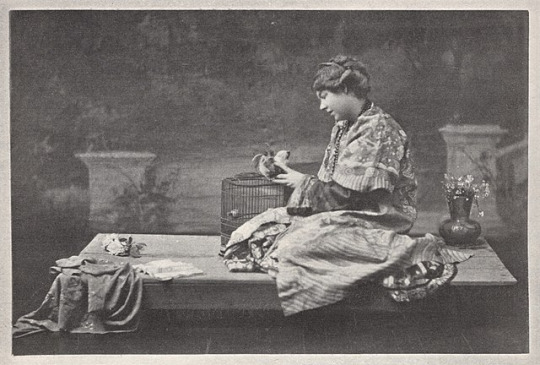
Pamela Colman Smith. Image in the public domain.
She’s the world’s most famous occult artist but her name is almost unknown.
Such is the enigma of Pamela Colman Smith (1878–1951), an early 20th-century artist, writer, and mystic. Smith created dreamy, Symbolist-inspired watercolors that won her acclaim in her youth, including three successful exhibitions at Alfred Stieglitz’s famed New York gallery, 291, where she was the first non-photographic artist to have a show.
She was also an intimate friend of Dracula writer Bram Stoker, poet William Butler Yeats, and the actress and artistic muse Ellen Terry, for whom Smith designed illustrations and stage sets.
However, Smith’s most lasting artistic contribution was undoubtedly her designs for the Rider-Waite tarot deck. Made in collaboration with mystic and scholar A.E. Waite, Smith created the Art-Nouveau-inspired imagery of mythical archetypes set against luminous monochromatic backgrounds. Released in 1909, the deck is now regarded as the standard set, with more than 100 million copies in circulation. Smith’s imagery has become synonymous with tarot itself.
And yet, for more than a century, Smith went wholly uncredited for her contribution. Her claim to the deck was only cemented by her iconic serpentine signature, a monogram she created while studying Japanese design, and which she embedded into the decoration for every Tarot card.
“Tarot is a visual device—and yet the visual artist who composed them was eclipsed by Waite, the scholar, and Rider, the manufacturer,” said Micki Pellerano, a New York-based artist, astrologer, and scholar of occult history, “Academics, with all their inertia and corporatism, are somehow more palatable to the public and valuable to the market than artistry and vision… little has changed.”
But Smith has slowly been gaining recognition. The exhibition “At the Dawn of a New Age: Early Twentieth-Century American Modernism,” currently on view at the Whitney Museum of American Art, features an entire vintage set of the Rider-Waite tarot deck with attribution to Smith alongside The Wave, a luminous 1903 watercolor and ink drawing in the museum’s collection. The artist’s place in art history is still forming, however, and her contributions are more complex than a simple story of rediscovery.
Pamela Becomes Pixie
Born in London to upper-class American parents, Smith moved through a sophisticated and cultured circle, spending her childhood in New York and then Jamaica, where she would be profoundly shaped by that nation’s folkloric history. Smith returned to New York in 1893, enrolling in Pratt Institute, though she would leave after two years to pursue her own interests, then returning to London following the death of her mother.
She was deeply involved in the literary world and her early accomplishments include the illustrations for a volume of verses by William Butler Yeats (1898), as well as the publication of her own writing, Annancy Stories, a collection of Jamaican folktales, and Widdicombe Fair, an illustrated version of a popular English folk melody.
By 1901, she had established a weekly salon at her London studio and apartment, and she started her own journal, The Green Sheaf, which she edited as well as contributing her own poems and illustrations. She devoted herself to miniature theater as well, constructing dazzling and diminutive stage sets for toy performances.
The Annancy Stories particularly won Smith admirers and a bit of notoriety. Smith toyed with gender conventions, granting the women characters in these stories more agency, and sometimes making the gender of the characters ambiguous. She’d also written these stories in Jamaican patois, with which she was familiar from her childhood—an unconventional decision at the time.
Smith was familiarly known as Pixie, a nickname bestowed on her by Ellen Terry and which captured something of her undefinable, impish spirit. Smith was often known to wear flowing robes, and occasionally pants, and her self-styling welcomed all sorts of speculation. “She adopted native costumes and wore feathers in her hair and colorful ribbons. It was almost like a self-constructed persona that she adopted,” explained Barbara Haskell, curator of the Whitney exhibition, in a phone interview.
Her sexual orientation and her ethnic makeup also sparked curiosity. She lived for many years with Nora Lake, her companion and business partner, with whom she may have shared a romantic relationship. Others have speculated that Smith was of biracial descent, with an English American father and a mother of either Jamaican or East Asian ancestry—although not much evidence exists to lead to any decisive conclusions on the matter. What was certain is that Smith was regarded as “other” by those around her and which in turn inspired her approach to art-making.
Early Fame and Acclaim
In 1907, Smith had her first exhibition at 291, featuring 72 watercolor paintings. These works were partially inspired by Smith’s own synesthesia, in which she experienced visual sensations set off by auditory impulses (her first synesthetic experience occurred while listening to Bach). She organized her works for the show with overtly musical references, such as overtures, sonatas, and concertos.
“In the 19th century, there was an idea that art was an expression of the unconscious and that it would elicit unconscious non-rational ways of thinking about the world,” Haskell said. “Smith would paint while listening to music as a way to unleash her unconscious, which would have fit Stieglitz’s mission at that point.”
This first exhibition was a commercial hit and Smith would have two more shows at the gallery in the following few years. Eleven of her unsold paintings and drawings remained in the collection of Stieglitz and Georgia O’Keeffe. Eventually, however, Stieglitz would turn to a more masculine vision of Modernism, leaving Smith somewhat disheartened.
The Embrace of the Occult
From early in her life, Smith’s spiritual beliefs were oriented toward the esoteric and arcane. She had been raised a Swedenborgian, a mystical denomination of Christianity, and, as early as 1901, began to engage with the Hermetic Order of the Golden Dawn, a secret society that explored occult, metaphysics, and paranormal activities, which certainly influenced her artistic output.
For Haskell, these influences were symptomatic of the time. “Smith represents a strain of artists in early American Modernism who were disaffected with materialism and rationalism, but who were also unsatisfied with organized religion and so turned toward more occult pursuits,” she explained. “Theosophy was so influential at the turn of the century and the Hermetic Order of the Golden Dawn was similar—a secret society that looked at ancient texts, the kabbalah, and tarot cards. This was predominant among women and I think of Agnes Pelton as a parallel.”
Smith was eventually approached by A.E. Waite, a scholar of the Hermetic Order, who had ambitions to create a new version of the 78-card tarot deck, and who commissioned Smith to create the illustrations.
Waite, a Grand Master of the Hermetic Order, offered direction for his vision for the order of the Major Arcana, which is characterized by allegorical characters such as the Fool and the Sun. The Minor Arcana, cards in four suits of wands, swords, cups, and pentacles, were left entirely to Smith’s discretion, and she transformed these cards, which had traditionally been simply symbols, into lush, image-laden scenes.
The deck is mythical in scope, ranging from moments of exalted regality to mischievous pleasure, and Smith’s compositional signature predominates the cards: a lone, mysterious, medieval hero appears against a nearly Byzantine monochromatic background.
For Pellarano, Smith’s familiarity with the significance of the tarot is evidenced by her detail. “She possessed a rare command over iconography, and a deep understanding of it,” he said. “Her designs are constantly revealing new layers of information. They encode so much meaning and evoke so much contemplation, but are gentle in their elegance and appeal.” Haskell notes commonalities to the work of Dante Gabriel Rossetti. “She was in England, and through the theater, she was exposed to a lot of Pre-Raphaelite art” Haskell noted.
Some of the tarot archetypes are believed to have been modeled by Smith’s friends—Ellen Terry’s daughter, Edith Craig, appears as the Queen of Wands and actor William Terriss as the Fool. Smith, who struggled financially throughout her life, would receive no copyright or credit for her contribution, and was paid only a nominal commission.
A Retreat to Obscurity
Following the publication of the deck, Smith grew increasingly interested in Irish mythology, and in 1911, she made illustrations for Bram Stoker’s final book, Lair of the White Worm. But soon enough, Smith withdrew from the art world. That same year, she converted to Catholicism and with a small inheritance purchased a home in Bude, England.
There she would devote herself more fully to causes like women’s suffrage and the Red Cross. She would die at age 73 in Bude, all but penniless. “It was her decision. She just exited the art world,” Haskell said.
Still, Haskell believes it is time for Smith to rejoin the story of Modernism. “Art, more than words, presents the mood of the time, and Pamela Colman Smith’s work does get to the essence of a feeling of that era,” she said. “On one hand, people were excited about industrialization and that was the dominant mode, but there were also those who were very concerned that it was stripping individuals of a sense of spirituality and connection to their inner core. That certainly hasn’t gone away and we’ve come fully back into such a moment.”
“Smith’s works feel even more resonant,” Haskell added, “showing art as a way to find a personalized, spiritual connection to divinity in isolating times.”
3 notes
·
View notes
Text
@lastblues sent in: "all i know is you are someone i have always known." (hear me out: author bill denbrough and musician daisy jones)

She flicks the bright red cherry off the end of her cigarette but doesn't take another hit, her blue eyes looking at the man across from her. When her agent had told her about some guy wanting to write a book about her, about her time with The Six, Daisy first said absolutely-fucking-not. There was too much involved, too much she didn't want to air out or admit to. Warren had been the one to nudge her to do it, one late night in rehearsals for her second solo album, the redhead laying on the floor of the studio, The Six's former drummer at his kit.
So, she agreed. Why not? Why the hell not?
But when Bill says that to her, she knows he doesn't just mean with the music, or even the poems-turned-lyrics she's got nearly a thousand notebooks full of. He means there's something about her, as herself, that he finds relatable, and that makes her feel higher than any drug ever had. "Yeah? That's a good line, you know," she replies, then hums a melody off the top of her head, her blue eyes closing briefly: "All I know is you're someone that I've always known, more than the movie screen and photographs alone," she sings, grinning. Already she could envision an Old Hollywood film star in her mansion on the Hills, as one of her lifelong fans turned lover finally meets her.
Upon opening her eyes again, the wide grin returns as she takes a quick hit of her cigarette, turning her head to blow the smoke out after a moment. "Anything you ever read from Billy Dunne about songwriting, and I'm sure he's gonna try and take all the credit for every hit we had, is wrong. He never wrote from his heart - that's a lie, he learned to. Because of me."
2 notes
·
View notes